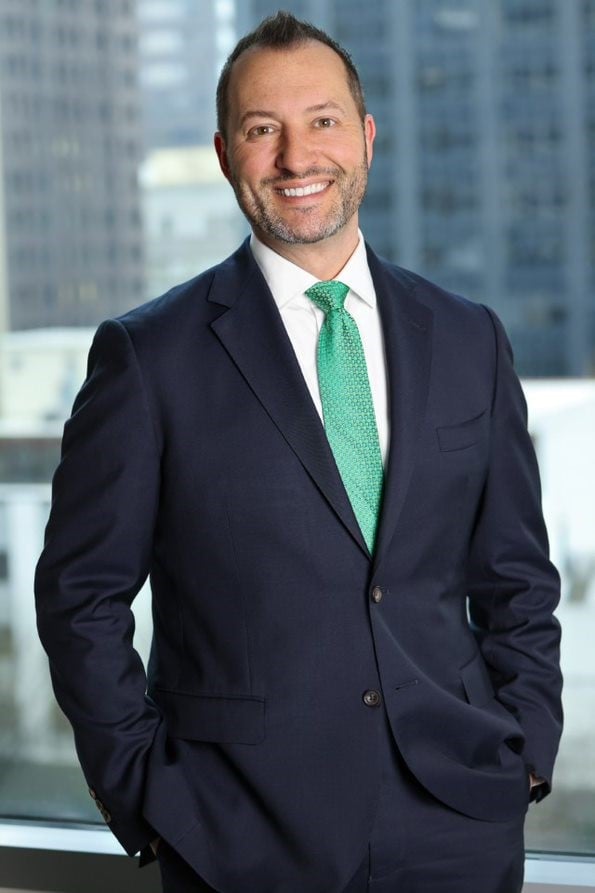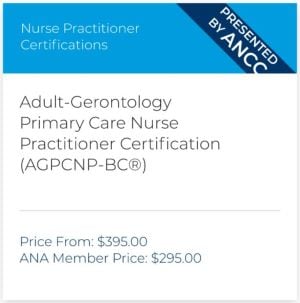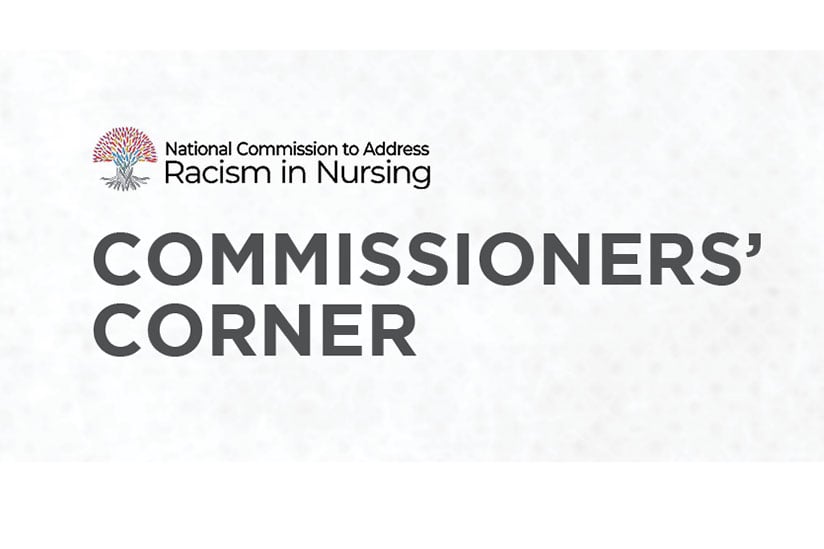Commissioners' Corner: How Data Can Help Fight Racism
Jeff Doucette, DNP, RN, NEA-BC, FACHE, FAAN
6 min
 Jeff Doucette, DNP, RN, NEA-BC, FACHE, FAAN, serves as senior vice president and chief nursing officer at Press Ganey, where he helps clients transform the patient and caregiver experience. Over a 30-year career he also has served as senior vice president and chief nursing officer at Thomas Jefferson University Hospitals, as vice president of the American Nurses Credentialing Center, and as a member of the American Nurses Association Board of Directors.
Jeff Doucette, DNP, RN, NEA-BC, FACHE, FAAN, serves as senior vice president and chief nursing officer at Press Ganey, where he helps clients transform the patient and caregiver experience. Over a 30-year career he also has served as senior vice president and chief nursing officer at Thomas Jefferson University Hospitals, as vice president of the American Nurses Credentialing Center, and as a member of the American Nurses Association Board of Directors.
At a broad level, how is data helpful in assessing and potentially driving antiracism and DEIB efforts?
Our DEIB efforts and goal to surface and address racism have to be data driven. A lot of emotion and opinion exist in this space, much of which isn’t underpinned by good scientific data. At Press Ganey, we look at this in in two ways: what employees and patients experience, respectively, in this space. Data is a very important part of illuminating people's life stories. We have a saying here that data is black and white, and stories are in color. You can't have one without the other. So, people's lived experiences with healthcare as an employee or as a patient can be either very positive or very negative. Rarely are they just neutral. Our data sets really help inform the stories that can say ‘Yes, your individual story of your experience is actually what we're seeing in the data as being experienced by an entire group of people.’ That's how we think about using data to inform these conversations.
How does a leader advance or hinder DEIB and anti-racist activities?
A leader plays a vitally important role. If a leader doesn't believe there's a problem—which, sadly, our data indicate that most leaders don’t—that alone can perpetuate problems with racism or with structural issues and constructs that get in the way of our ability to be open to change.
The first piece of advice that we give leaders when we show them these data is to be open to the story that the data are telling. Having a spirit of inquiry around this as a leader and receiving the data in the least judgmental way possible are key. We’d all like to say that we're not judgmental, but it’s human nature to be so. If we try to receive the data and not react to it—to just sit with it—t’s intended to drive more questions.
How does a spirit of openness and sitting with data lead to productive change?
As a science, healthcare data sets are still relatively immature around some of the issues that are driving DEIB. For example, we know that the experience of a Latina female having a baby is dramatically different than a White female having a baby. What we don't have full understanding about is what each element of that difference that we measure really means or how it shows up in the healthcare experience. Our approach is to have a conversation about the available data from either patients or an organization. We then guide our clients on a journey to dive much deeper into those data. We encourage focus groups and help facilitate those conversations. What we don't want is people to take high level first cuts of data and react by saying, for example, we have to do X whenever a patient comes in. That’s not the best response to this type of data. It requires a much deeper level of understanding.
How do the roles of an executive leader, middle manager and frontline nurse manager differ when it comes to DEIB?
The most important thing between those three levels of leadership is open communication in both directions. When executive leaders are hearing from and communicating with the frontline and frontline leaders are feeling comfortable communicating things back up and to their teams, great communication happens. Like other structural obstacles that we’re trying to overcome, communication is a foundational element that we see time and time again. When communication is good, open, honest, and direct that’s when change can happen. When communication isn’t encouraged or is even shut down, things don't change.
From an executive leader’s perspective, asking questions, being open to communication even when that communication is difficult or might not be something that you want to believe is happening, sets a very important tone for how we're able to surface the things that are bringing us concern.
Middle level leaders in healthcare organizations are always in the most difficult positions because they get pulled by every constituent in every direction. In their case, having psychological safety to speak up, to surface things, to ask questions about the data, and make recommendations based on what they're seeing and being open to learning, are all crucial.
Nurse managers are the linchpin that keeps our healthcare system moving forward because they’re on the frontline of interfacing with every key constituent—providers, patients, families, executives, and other leaders. This means we've really got to equip those leaders with the tools to have discussions with and respond to their employees about what they're seeing and feeling. Racism and DEIB issues are uncomfortable for many people to talk about. So, when an issue happens, people tend to ignore it, hope it goes away, make a joke about it, say they didn't mean it, or something similar. I always start from the perspective that this leader reacted in this way because we haven’t equipped them with the right tools and education about what to do in the situation they face.
Have you thought of how your approach to leading at Press Ganey and elsewhere might be different because you’re a White man as opposed to a nurse of color?
Yes, 100%. One of the things that I've learned in this process of understanding our data is that everything I see, I have to take a step back and pause myself as a middle-aged White man. I have privilege that comes with that and my work with the Commission and as an ANA Board of Directors member when the Commission began its work. I've been closely tied to this work, as an outside observer at the beginning, and now as a Commissioner. I've learned a lot working with the incredible people who serve on the Commission and in my work here at Press Ganey. I try always to maintain an awareness of that, especially as I'm presenting or responding to data that are sensitive for a lot of people. That said, I identify with the LGBTQ+ community, and there are certain aspects of my experience in the healthcare system as a gay man and gay leader that I think parallel some of the experiences that many of my colleagues have had. I'll never be able to remove the fact that I'm a middle-aged White man and have other lenses that I evaluate DEIB from, but my experiences add a level of sensitivity and understanding that might not be readily apparent.
What life experiences have shaped your DEIB journey?
A lot of people don't know that I have three adopted siblings, two of whom are Black, and they live in rural Maine. My partner is also Black. My family unit has received comments and actions that I absolutely consider to be racist and completely unacceptable. So, I have that very personal connection to this work. I also have had colleagues who’ve been the recipients of comments and actions that I find deplorable. I've only been able to get to where I am personally because I’ve been surrounded by allies who’ve been part of my journey every step of the way. I try to be that person to many different people and groups.
In thinking about allyship, White nurses on the frontlines might witness something happening to a colleague, but there's an element of fear we all have to stay in our lane and not act. How can a person overcome this inertia?
It's absolutely ridiculous what’s happened in the national conversation, the vitriol and energy around these topics. It adds significantly to people's fear to jump into the conversation. I believe this is fundamentally an education, awareness, and empowerment problem that we haven't given people the tools to respond. By the way, no response is also a response; people tend to forget that.
Until we get to the point where nurses who look like me respond in some way, we always risk leaving our colleagues hurting, feeling unheard, unsupported, and not feeling our love. I would like to believe that if you ask any healthcare provider whether they would want their coworker to leave their presence with those negative feelings, the majority would say absolutely not. First steps would be to check in, ask if they want to talk about what happened, ask how you can help, how you can do better next time.
What message would you like to give to nurses of color?
We see you, and you’re surrounded by many allies who want to be part of the journey to making things better. We don't always know what we should be doing. We might not always have it come out of our mouths in the right way, but most people, I believe, have the right intention and want to be alongside you on this journey.
What would you like White nurses to know and do about racism in nursing?
It’s OK to feel uncomfortable, to not have answers, and to ask questions. I think our non-White colleagues would feel exponentially better in the work environment if they just knew that their colleagues had an awareness that it's not always easy for them coming to work in a safe and open way, and to have sometimes difficult conversations about what that feels like. We should ask our colleagues what we can do to help make things better or continue the momentum. I don't think there’s a neutral in this space. You're either adding to or taking away from the work culture, and it's way broader than just race. We all have better work cultures when we're engaged in these conversations. Our data show strongly that when the environment is more inclusive, employee engagement is significantly higher and patient outcomes are better.
What will it take for the nursing profession to become inclusive and welcoming to everyone?
There’s a lot of emotion around this but if you look at the data, our workforce should be much more diverse than it is. There’s an opportunity for us to continue diversifying our profession and the data show everybody benefits when we do. The message, then, is that we all have to be able and willing to open the door and pull people into our profession for the next generation. The more that we amplify the diverse voices that exist in our profession to pull people into the profession, the stronger the profession will be.


